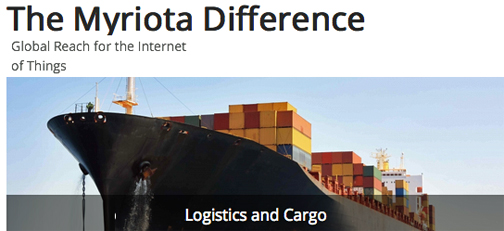[Satnews] Tiny devices to transmit data to and from some of the world’s most remote locations are set to revolutionize machine-to-machine (M2M) communications.
New Australian company Myriota has been formed to commercialize technology developed by the University of South Australia’s Institute for Telecommunications Research. The technology will use LEO satellites to provide two-way data connectivity for remote sensors and devices for industries such as oil and gas exploration, agriculture, environmental monitoring and defence where there is a need to access little pieces of data in very remote locations.
Myriota chief executive officer Dr. Alex Grant said there was an unmet need for collecting data from remote areas at an affordable price point that brought down the cost by at least a factor of 10. “There might be a remote cattle station that has hundreds of different watering points and you’d like to know there’s water in them or is my fence still intact or perhaps you want to do some livestock tracking to know where your herd is,” Dr. Grant said."There were existing satellite services in place but they were expensive in terms of the device needed on the ground and the service fee to access satellite. That might be OK for your broadband service in the outback but it’s not OK if you just want to know is your gate is open.”
The South Australian company will use the first half of 2016 further developing prototype devices into a consumer product it can take to market. Myriota has partnered with Canadian company exactEarth, which will provide funding to commercialize the new technology and access to its constellation of low earth orbit satellites.
“That has given us a very rapid pathway to offering this service potentially globally very quickly,” Dr. Grant said. “The first generation (of devices) will be something like the size of a credit card. The second generation in subsequent years will be a further miniaturization to really open up the set of applications for collecting the data. Not only do we need to show the technology working, we need to show the benefit of having access to the data where there is currently no access. We think there’s a market segment that is currently not really served and that is really an opportunity and it’s quite exciting—we believe we have a technology edge and one that is addressing a latent market that is really waiting for an economic solution. We are aiming to build up global markets but we’re really leveraging a fairly strong history of expertise and talent in wireless communication in South Australia."
University of South Australia won funding to explore the technology through the Federal Government’s Australian Space Research Program grant in 2011. In 2013, the technology was awarded “Technology of the Year” by the Wireless Innovation Forum.
Dr. Stephen Rodda, chief executive officer of UniSA’s commercialization arm, UniSA Ventures, said Myriota would make a significant contribution to telecommunications services globally and make an economic impact locally, potentially spurring the growth of businesses in a number of industries. “Using M2M communications, high-volume applications in asset tracking, inventory management, environmental sensing, and livestock tracking can now be undertaken without prohibitive expense,” Dr. Rodda said. “Markets that may have not been commercially viable in the past now have the potential to emerge and grow quickly providing many avenues for the research from UniSA to deliver demonstrable impact commercially and to society.”



